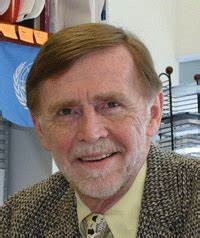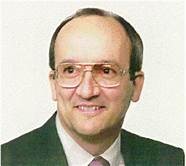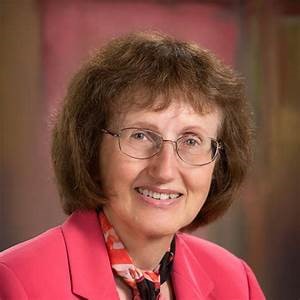Memoir - S. Narasinga RaoMemoir | Publications | Curriculum Vitae | Videos | Slides | Articles | Obituary
Crystallography, Crystallographers and Crystallographic Associations – My Story2020
After I received bachelor’s and master’s degrees in physics from University of Madras through Madras Christian College, a Scottish Missionary Institution, I joined as a lecturer in physics at Madras Christian College (MCC) in 1962. The Head of the department of Chemistry S.V. Ananthakrishnan at MCC who had a big research group under him always encouraged me to do Ph.D. While studying for M.Sc., our intercollegiate lectures on crystallography were taught by G.N. Ramachandran, who was a well-known crystallographer, and Gopinath Kartha, visiting professor from Buffalo. G.N. Ramachandran was known for his work that led to his creation of the Ramachandran plot for understanding peptide structure. He was the first to propose a triple-helical model for the structure of collagen. Kartha determined the molecular structure of the enzyme ribonuclease while at the Center for Crystallographic Research, Roswell Park Memorial Institute, Buffalo, NY along with David Harker and Jack Bello. This was the first protein structure elucidated and published in the United States. Along with him were other known crystallographers: Rengachary Parthasarathy; Gopala Ambady, who worked later in David Harker’s department at Roswell Park; Raghupaty Sarma, who was a professor at SUNY-Stony Brook; and S. Thyagaraja Rao, who worked with Muttaiya Sundaralingam, a pioneering stereochemist and crystallographer of nucleic acids who was at Pittsburgh, Seattle, Cleveland, and then at Madison. All these people guided us with laboratory work on crystallography in Madras. There was also Sivaraj Ramaseshan who was the Director of Indian Institute of Science, Mamannamana Vijayan who worked with Dorothy Hodgkin and M.A. Viswamitra at the Indian Institute of Science in Bangalore. This was the beginning of my interest in crystallography.
Then I decided to do my Ph.D. in crystallography. The only concern at that time was financial help needed. As my parents and siblings were dependent on my earnings, I could not live on small stipends available in India. The only opportunity was to apply for assistantships abroad. I did apply to several universities in USA and Canada. The first offer I received was from I. David Brown at McMaster University, Hamilton, Ontario, Canada. I immediately accepted the offer and was working on my visa applications. After I got the visa to Canada, I applied for study leave to do my Ph.D. from Madras Christian College where I was working as a professor. The then Principal Padmasri Dr. Chandran Devanesan was kind enough to grant me the study leave for 5 years. I did not know anyone in Canada. Luckily for me, a librarian, Mr. Lewis from St. Catherine’s University, Brock, Ontario who had come as a visiting scholar at Madras Christian College offered his help to talk to his parents in Waterloo, Ontario. I booked the air ticket and landed at Toronto airport on September 13, 1967. Rev. Charles Lewis and his wife received me at the airport and drove me to their home at Kitchener-Waterloo in Canada. Rev. Lewis was a pastor in a church at Kitchener-Waterloo, Ontario, Canada.
The Lewis Family provided me vegetarian food and I stayed with them for two days. I was and still am a pure lacto-vegetarian and do not even eat eggs. They provided me with vegetarian meals as salads and fruits, though they did not know I am a rice eater. Then, on Monday morning, I took a bus from Waterloo to Hamilton and landed with bag and baggage at McMaster campus. I stayed with another Indian student, R. Gopal who was a graduate student in chemistry with Crispin Calvo specializing in crystallography. Thanks to Gopal who gave me the first typical south Indian meal I am accustomed to after three days of starving basically. I started working with Dr. Brown on inorganic crystal structure of potassium hexabromostannate. I was a physics student all my life and had not done any crystal structure earlier except the theory of diffraction and lattice structures at Madras in a few lectures. I was lucky to have Bertram Brockhouse, the Nobel Laureate, teaching us solid state and neutron physics. I was like a fish out of water – having left parents, brothers and sisters back home, not knowing how to cook being a vegetarian. I found a house near the university where 11 students lived including me, within a walking distance from McMaster University, staying in a three bedroom home keeping the suitcase under the bed and sleeping on the bed. It was cot space living for six months before I moved to an apartment nearby with another Indian student. I felt very often that if I had a return air ticket, I would have gone back. I was homesick and it was miserable and depressing living initially. One day, I came across an engineering student V. Gurunathan at McMaster who was married, and he took me home and gave excellent south Indian food that I had missed for more than a month. This brightened my life a bit. As time went on, I had picked many Indian friends and families and started feeling at home. I could then concentrate on my studies. I even became the President of India student association at McMaster, organized Indian cultural events and even screened a Tamil movie “Enga Oor Raja” for the first time in North America at McMaster. We had 300 people in attendance from all over Canada and USA. I also met other Indian students – N. Krishnamachari and N.C. Jayadevan who were graduate students in chemistry specializing in crystallography with C. J. L. Lock. In addition to myself, there was Nicholas Panagiatopolous who was a graduate student with I. David Brown.
I was not inclined to continue inorganic crystallography. Somehow, I was very homesick and did not feel comfortable with the atmosphere there and felt helpless. I felt very often that if I had a return ticket to India, I would certainly have gone back. My goal was not to continue for Ph.D. there, but to graduate with a master’s degree and move on to some other university where I could study biophysics, which is my interest. After getting master’s degree from McMaster, I returned to India in September 1969 and joined Madras Christian College to teach. Before I left for India in 1969, I applied for a graduate assistantship in SUNY-Buffalo. I was married to Shobha on December 22, 1969 and this was an arranged marriage. We then moved to Buffalo and I joined Rengachary Parthasarathy as a graduate student in June 1970. At that time, the foreign exchange regulations in India permitted us to carry $8.00 each to USA. When we landed in Buffalo, we did not even have funds to pay for the taxi from airport. For the first few weeks, Parthasarathy and his wife Prema were kind enough to let us stay with them. Then we moved to an apartment rented by one of my classmates from Madras, M. S. Seshadri who was a postdoctoral fellow with Vishnampet Vaidhyanathan at SUNY-Buffalo. Thanks to Seshadri. In my personal life, I am the eldest of the six siblings to my parents. My parents were not educated and never attended school. I am the first generation college graduate in our family. I had to support my parents and also supplement my brother’s earnings as a teacher to financially support the family. My wife had to look for a job to supplement my income as a graduate student to meet the expenses and support my family in India. Luckily, she found a job as a research technician with David Pressman and Alan Grossberg at Roswell Park Memorial Institute. We had our first baby in Buffalo on December 2, 1971. Thanks to my wife for helping our family with her responsibilities and hard work; without her help we could not be what we are today. Thanks to Rengachary Parthasarathy, my research guide, who helped me with my research and helped me both personally and as his first graduate student. I knew that David Harker, a pioneer and well known crystallographer (graduate student of Linus Pauling) was at Roswell Park Memorial Institute in Buffalo, NY. There were Gopinath Kartha and Rengachary Parthasarathy who were working with Harker. One day, I decided to go and meet Parthasarathy, who directed me to Harker. Harker reviewed my credentials and recommended me to see Parthasarathy, who offered me an assistantship to work with him.
I had also applied for an assistantship with Muttaiya Sundaralingam at University of Wisconsin at Madison who also offered me an assistantship. I chose Center for Crystallographic Research at Buffalo to do my Ph.D. as I wanted to work with Harker, Kartha and Parthasarathy. This made Sundaralingam mad and angry as I did not choose to work for him. He did not talk to me for nearly two years.
When I came to Buffalo for an interview with Harker, the first question he asked me was “What type of Indian are you? I have Dr. Kartha who eats meat and does not drink. I have Dr. Partha who does not eat meat but drinks.” I told him that I neither eat meat nor drink. He said it is perfect. He also told me that India is a country with several states and languages of their own and it must be called “United States” as all states work united with one federal government.
During the interview with Harker, I produced all credentials and only one letter of recommendation. I did not approach Brown for a recommendation as I thought he would not give me one, but I was pleased to find that Harker did not need one. I joined his group for my Ph.D. I finished determining eight crystal structures and published three papers in Acta Cryst. in two and half years. I finished my course work too. But there was a foreign language requirement before I could submit the thesis. I approached Harker if I should enroll in basic German or French courses as I did not know either of these languages to enable me to translate a paper from foreign language to English. Harker spontaneously suggested that I do not need to enroll in either of these language courses, but list French as a foreign language and translate a paper from French to English. His sense of humor was unimaginable. He told me that French is nothing but misspelt English and I should have no problem. I did so.
Harker was gentle and unassuming. The graduate students had their offices on the third floor of the crystallography center (it was demolished 5 years ago) on Michigan street that had no elevators. When a graduate student receives a phone call from outside, Harker will climb up three floors and get that student to answer the phone which was in his office on the first floor.
When he sees my spouse or anyone else, he will remove his hat and bow down as a mark of respect. He lived in a high rise apartment at the intersection of High Street and Main streets in Buffalo and walked from there to the crystallography center every day. He wore a hat and walked reading a book on the street. Surprisingly, he carried a pistol in his coat packet to protect himself though he was a peace loving person. In his apartment, he had a good collection of guns against a big wall. That was his hobby as well.
I did courses in crystallography taught by Harker. He was an excellent teacher and his classes will be at 7:30 PM after dinner. He enjoyed and encouraged students to ask him questions. He felt that no question was stupid and we were there to learn. He then gave us a two-dimensional Patterson map to solve in the test. We then wrote a program in Fortran IV on IBM 1130 and solved it. We were four of us in the class. Though the Patterson map was solved correctly, he failed all of us. He told us that what we had done was like a black box, we should solve manually by hand. He gave us additional two weeks. He then gave all of us an A grade.
On another occasion there was a condition that the department needed an external examiner for my thesis. Parthasarathy suggested Dr. Camerman at the University of Toronto. I then submitted my thesis for his review. He sent his comments back and the only comments were that I had to correct all American spellings to British spelling. There were many such spellings on each page of the 200-page thesis. We had no computers to type at that time and we had to manually retype each page with a typewriter. I then took his comments to Harker for his decision. He looked at the comments and decided that I need not retype and submit the thesis with American spellings. This gave me such a good relief.
Harker, Chairman of Biophysics at Roswell Park, was also kind enough to exempt me from a three-year residency requirement as I was ready to graduate in two and half years. I then graduated in June 1973. He then asked me what my plans were. When I told him that I got a postdoctoral position in Oklahoma, he told me that I do not need to look at weather map there. The land is so open and plane that I could see the weather changes coming miles and miles rightaway.
Unfortunately, Harker’s wife passed away before I left for Oklahoma in 1973. When I was in Oklahoma as a post-doctoral fellow with Jean Hartsuck at the Oklahoma Medical research Foundation, I received an invitation from Harker as he was getting married to an old classmate of his at high school. He was so personal and I was very much moved by this.
After the crystallography center was closed, Harker joined Herbert A. Hauptman at the then Medical Foundation of Buffalo at 73 High street. Towards the end as he was sick, Harker came to the office everyday with oxygen cylinder on his back and breathing oxygen through nostrils. Once he told me that he would die when he cannot publish any more scientific papers. He did so as he published his last paper one month before his death.
At ACA meeting, once he told us that he was presenting a paper on Harker sections and planes. He suddenly saw Lindo Patterson hitting Harker’s back with a stick. When he turned to him, Patterson told Harker that he could not imagine how he failed to recognize the idea of Harker section and planes though he had worked on Patterson map.
Harker always used to tell the students that Linus Pauling was our crystallography grandfather. Harker never believed in writing voluminous thesis. He followed the principle of Pauling that a student must publish papers in crystallography journals and then put them in a folder with a one page acknowledgement and that should serve as thesis.
When I first mounted my crystal on a goniometer head and was ready to put the goniometer on GE-XRD machine for collecting data, Harker walked in. He took the goniometer head with the crystal I had mounted, held it in his hands, tapped his hand with his fingers and the crystal fell down. I was in great shock and worried that I lost the crystal. Dr. Harker smiled, patted on my back and told me that whenever I mount a crystal hereafter, this should be the first test I do before I put it on the machine. Of course, he watched me mounting another crystal, doing the test and once confirmed that the crystal was on the goniometer tight, mount it on the machine and collect the data. Thanks to Harker for the wonderful things he taught us in addition to crystallography.
Even in class, when we told him that we did a foolish mistake, he will smile and say that doing a mistake is not foolish and there is no foolish mistake. He enjoyed when we asked him questions and he would go out of the way to make sure that we understood the concept and have learnt it properly.
Thanks to Rengachary Parthasarathy, David Harker, Gopinath Katha, Gopala Krishna Ambady and Harold C. Box for all their help and guidance through my stay as student at Roswell Park in Buffalo.
After graduation with Ph.D. degree, I had offers for a postdoctoral position from Bob Kretsinger in Virginia, Paul Siegler in Chicago, Brian Matthews in Oregon, Philip Coppens in Buffalo and Jean Hartsuck in Oklahoma. I was on exchange visitor visa and did not have green card or permanent residency or US citizenship. Therefore, the only offer I could accept with my visa situation was with Hartsuck and moved to Oklahoma in 1973. Oklahoma Medical Research Foundation (OMRF) sponsored me for green card and thanks to Jean Hartsuck.
I joined as a post-doc in the Laboratory of Protein Studies at OMRF. I was working on two projects: isolation, purification, characterization and crystallization of human plasma albumin and porcine pepsinogen. OMRF sent me to work for two weeks with William N. Lipscomb at Harvard and then with Alexander McPherson at University of California, Riverside to learn the techniques of biochemistry and protein crystallization. I succeeded in crystallizing human albumin and porcine pepsinogen. We published several papers on biochemistry of these proteins as well as crystallization including preliminary data on these crystals. OMRF did not have well equipped protein crystal laboratory at that time and these structures were carried out in other laboratories. We certainly missed a good opportunity. After working as senior research scientist for 10 years at OMRF, the authorities closed the X-ray laboratory. This is when I moved to teaching at the University of Central Oklahoma, taught for 10 years and served as Dean of Research and then as Dean of Dr. Joe C. Jackson College of Graduate Studies and Research for 20 years before I retired in June 2008.
When Parthasarathy was a member of the nominating committee of ACA, he nominated me for the post of ACA Treasurer. I was elected and served as Treasurer of ACA from 1989-1995. I was appointed as Chief Financial Officer from 1996 to now. I have served on the ACA council for over 30 years from 1989 in several capacities: ACA Treasurer, CFO, and chair of meeting site selection, organization and hotel negotiations committee. I served on the Governing Board of American Institute of Physics as ACA representative from 1996-2005. I have been an Investment Counselor and member of the International Union of Crystallography Finance Committee from 2011 to now. I also served as ACA representative for the Science Policy Advisory Committee for foreign embassies at the state department for three years. I am also a Fellow of American Crystallographic Association and have received the ACA Service Award. I also serve on the Structural Dynamics Board of AIP Publishing as one of the two ACA representatives.
When I took over as treasurer in 1989 from Catharine M. Foris, who was the outgoing treasurer, the association had a net asset of $80,000. Catharine gave me the books and a check for $80,000.00. This is the beginning of my financial history of ACA. I am proud to report that as of June 30, 2019, we have a net asset of nearly one million dollars today, which includes the award funds and ACA reserves.
I collaborated with Devadasan Velmurugan of the Department of Biophysics and Molecular Biology, Anna University, Chennai, India on organometallic structures; Manuel Soriano-García of UNAM, Mexico City, on protein crystallization; and was a guest lecturer at the Department of Physics, Sri Venkateswara University, Tirupati, India for four years at the invitation of Prof. M. Krishnaiah, lecturing on applications of physics to biology and medicine and crystallography. I was invited by Dr. Vijayan to talk at the Indian Institute of Science on Crystallization and Characterization of Human Plasma Albumin. Devadasan Velmurugan was a post-doc with Herbert A. Hauptman at the then Medical Foundation of Buffalo. Manuel Soriano and I were graduate students with Parthasarathy at Buffalo. Manuel was one year junior to me. I had the opportunity and pleasure of teaching English language and basic crystallography to Manuel. While at OMRF, I worked with Otto Dideberg from the University of Liège, Belgium who was a postdoctoral fellow with Jean Hartsuck.
PERSONAL REFLECTIONS AND REMEMBRANCES
When Richard E. Marsh was the president of ACA, I was treasurer. After one council meeting in Buffalo, Marsh borrowed $10.00 from me as he was short of cash and promised to return after his return to Caltech. He kept up his promise and a week later, he mailed me a check for $10.10 that included an interest of $0.10 for a week. He had such great humor and it was a great pleasure to work with him.
In one of the ACA meetings, when I was Dean of Graduate College in Oklahoma, I invited Jerome Karle to be a speaker at a function. He readily agreed. His wife Isabella Karle was next to him. So, I asked Jerome Karle if I should invite his wife also, and I would be glad to do so. He then pulled me aside with his hand on my shoulders and whispered into my ears: “Can I be alone for two days in Oklahoma?” Then when he was at the hotel in Oklahoma sleeping, someone by mistake knocked at his door at 12:30 AM, and told him that he had a reservation for that night. Dr. Karle agreed, packed all his stuff in the suitcase, vacated the room and was sleeping on the couch the rest of the night in the reception area. When I arrived at the hotel at 6 AM to pick him up to the airport, he revealed this story. He was unassuming and I felt bad.
In one of Hauptman’s visits to Oklahoma, we were talking about income tax preparation. Hauptman told me that he prepared his own taxes. One CPA in HWI asked Hauptman if he could review his taxes and maybe save him some money too. Hauptman was confident he had done it right. On further insistence from CPA, Hauptman gave him his tax forms that he had prepared. Two weeks later, the CPA returned Hauptman’s forms with no comments. Hauptman was very happy. Later, Hauptman received an invoice for $450.00 for tax review from the CPA. Hauptman was very unhappy with this situation.
After Hauptman and Karle were awarded the Nobel Prize in Chemistry in 1985, I invited Hauptman to open a Nobel Gallery at the University of Central Oklahoma on the occasion of the centenary of the university. He agreed. When he came, he visited our home. Our daughter Maya was in second grade. She was very talkative and had no inhibitions. She asked Hauptman to give a talk to the children at Chisolm Elementary School in Edmond, Oklahoma where she was a student. I quietened her. Next morning, after breakfast, Hauptman made me call the principal of elementary school and gather children for a talk by Nobel Laureate. It did happen. I took Hauptman to school where more than 100 children from grades 1-5 had gathered. He talked to them why he got the Nobel Prize, what it was and explained crystallography in simple words. There were lots of questions and he answered all of them. The community was simply thrilled. Every student wrote a letter of thanks and appreciation to Hauptman next week and I mailed them to him. This was such a joyous occasion.
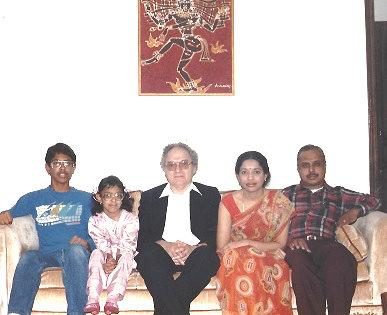 Herbert A. Hauptman with my family at our house in Edmond, OK (1986). L to R: Pradeep Rao (son), Maya Rao (daughter), Herbert Hauptman, Shobha Rao (wife) and S. Narasinga Rao. Herbert A. Hauptman with my family at our house in Edmond, OK (1986). L to R: Pradeep Rao (son), Maya Rao (daughter), Herbert Hauptman, Shobha Rao (wife) and S. Narasinga Rao.On another occasion, I was driving Hauptman to Oklahoma City airport after his visit. Our daughter, Maya, who was 7 years old accompanied us. When Hauptman talked about science to her, Maya told him that the sun is going around the earth. Politely, Hauptman said, “No Maya, earth is circling the sun.” Maya insisted that her science teacher told her, and the teacher must be correct. After all this, Hauptman told Maya that, maybe, her teacher is correct, but please tell her that I said it is the earth going around the sun. What a great soul Hauptman is. He will not let the teacher down in the eyes of Maya, but at the same time he wanted to let the teacher think about it. My mother and sister-in-law visited us from India. On the way from Niagara Falls, I decided to stop by Hauptman’s office so that my mother can see him also. When we went to his office and I introduced my mother to him, Hauptman got up from his seat and offered my mother his chair to sit. My mother who has never been to school and who could not speak English was simply thrilled at his gesture. This is yet another example of Hauptman’s humbleness, humility and respect for elders. Dr. Hauptman always advised our children to stay home and study, and emphasized the importance of family bonding.
In March 2016, IUCr had the finance committee meeting in Leuven, Belgium at the hotel. The meeting was over, we had lunch and had checked out of the hotel. We were on our way to the airport for our return journey. We were informed that there was a terrorist attack at the Brussels airport and airport was closed. We had no transportation in Belgium – no taxi, no bus, no train and no flights. We, Marv Hackert, IUCr President, Mike Glazer and myself were in a great panic. Luc Van Meervelt was gracious to help us. He drove us 150 km to Lilly, France across the border to catch a train to London. We had no reservation for train. The train from Belgium was canceled. We waited for the train from Paris to London, got onto the train in unreserved compartment, traveled to London at 10:30 in the night, stayed overnight and traveled back to USA. Marvin L. Hackert with beard and myself with brown skin were also concerned about questioning in the France border, but Luc was there to help us.
For the IUCr 2017 Congress (August 2017, Hyderabad, India) I was asked by IUCr to organize a seminar in honor of William L. Duax, who had served not only as president of IUCr but also as the IUCr Newsletter editor. I requested several friends from various countries who readily agreed to participate and also talk. It was a big honor for me and was a very joyous occasion.
PHOTO GALLERY
IUCr CONGRESS, HYDERABAD, INDIA, AUGUST 2017
THANKS To the following friends with whom I have worked very closely in several capacities (in some cases 30 years) in organizing ACA annual meetings, site selection, hotel negotiations, ACA Council, AIP, AIPP, Structural Dynamics, International Union of Crystallography Finance Committee, organizing IUCr Congress in Seattle and Hyderabad and many more.
|


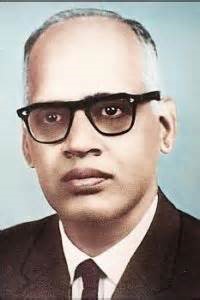 G.N. Ramachandran.
G.N. Ramachandran.
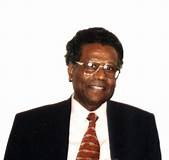

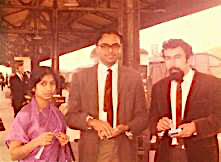
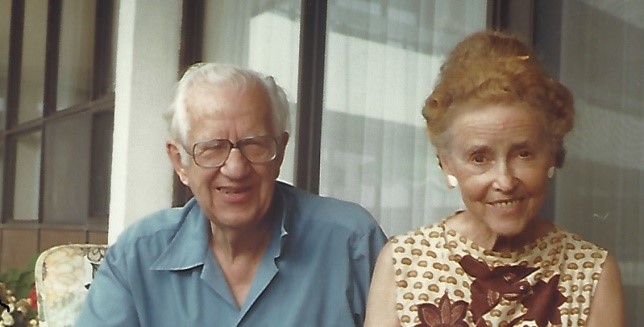 Rev. and Mrs. Charles Lewis.
Rev. and Mrs. Charles Lewis.


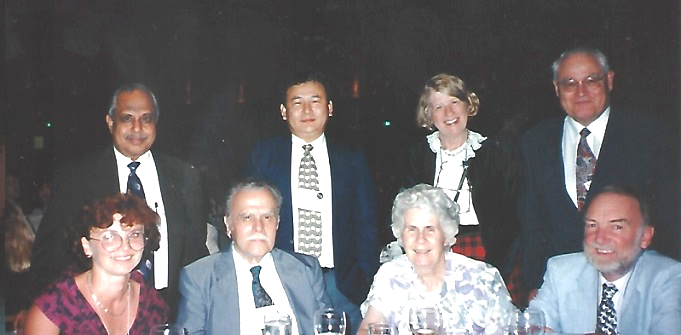
 Linus Pauling.
Linus Pauling. 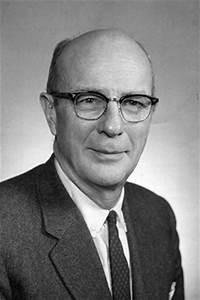
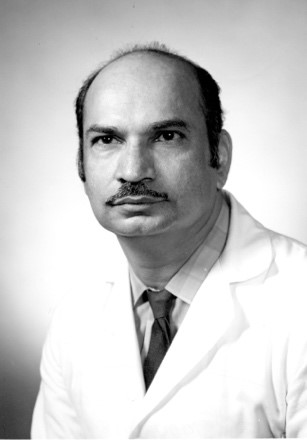

 Narasinga Rao, graduate student at Center for Crystallographic Research, Roswell Park Memorial Institute, Buffalo, building a model of his first crystal structure – glycylglycine nitrate (1971).
Narasinga Rao, graduate student at Center for Crystallographic Research, Roswell Park Memorial Institute, Buffalo, building a model of his first crystal structure – glycylglycine nitrate (1971).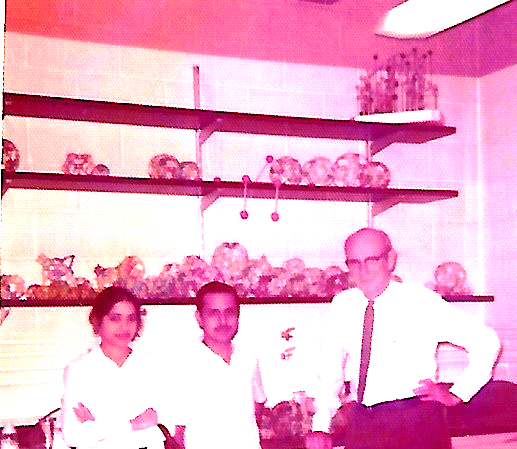 My wife and I with David Harker in his office (with color symmetry cubes in the background).
My wife and I with David Harker in his office (with color symmetry cubes in the background). Jean A. Hartsuck.
Jean A. Hartsuck.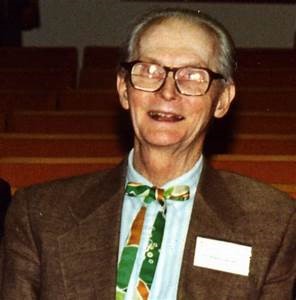 William N. Lipscomb.
William N. Lipscomb.
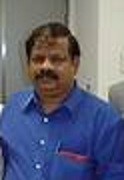 Devadasan Velmurugan.
Devadasan Velmurugan.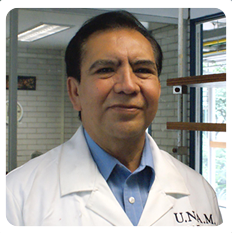 Manuel Soriano-García.
Manuel Soriano-García.
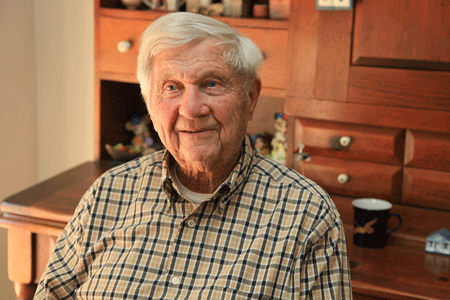 Richard E. Marsh.
Richard E. Marsh. Jerome Karle.
Jerome Karle. 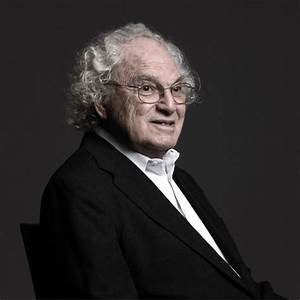 Herbert A. Hauptman.
Herbert A. Hauptman.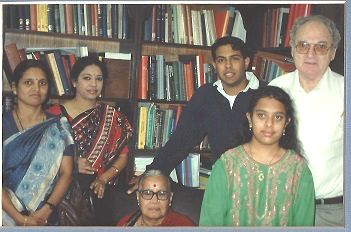 My family in Herbert A. Hauptman’s office at Medical Foundation of Buffalo during my mother’s visit to USA (1987).
My family in Herbert A. Hauptman’s office at Medical Foundation of Buffalo during my mother’s visit to USA (1987).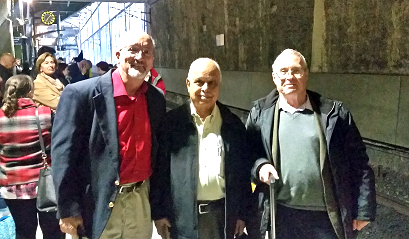 Marv Hackert, Narasinga Rao and Mike Glazer in Lille, France.
Marv Hackert, Narasinga Rao and Mike Glazer in Lille, France.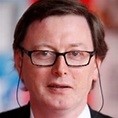
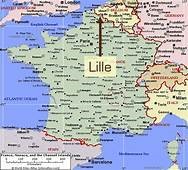
 Presenters at the Symposium on Bill Duax coordinated by Narasinga Rao at the IUCR Congress and General Assembly in Hyderabad, India, August 2017. L to R; Devadasan Velmurugan, Graciela Diaz de Delgado, Narasinga Rao, Bill Duax, Hanna Dabkowska,
Presenters at the Symposium on Bill Duax coordinated by Narasinga Rao at the IUCR Congress and General Assembly in Hyderabad, India, August 2017. L to R; Devadasan Velmurugan, Graciela Diaz de Delgado, Narasinga Rao, Bill Duax, Hanna Dabkowska, 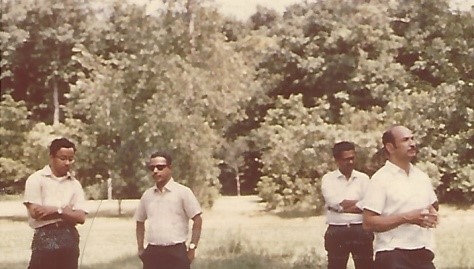 Drs. Kartha and Partha in picnic at Grand Island Park, Buffalo, NY, 1972. L to R: Rengachary Parthasarathy,
Drs. Kartha and Partha in picnic at Grand Island Park, Buffalo, NY, 1972. L to R: Rengachary Parthasarathy, 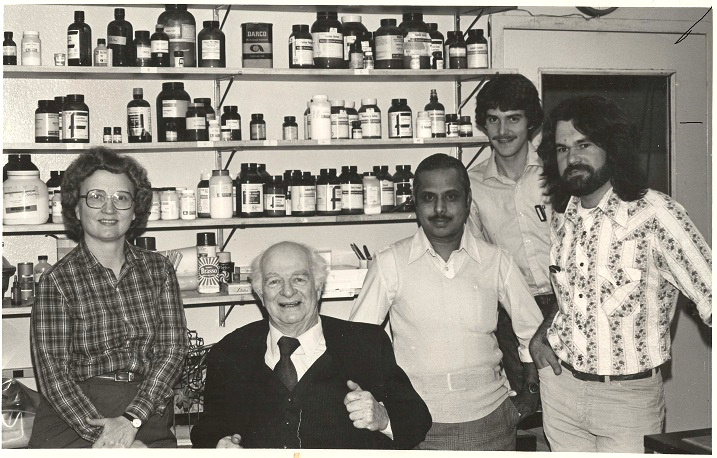


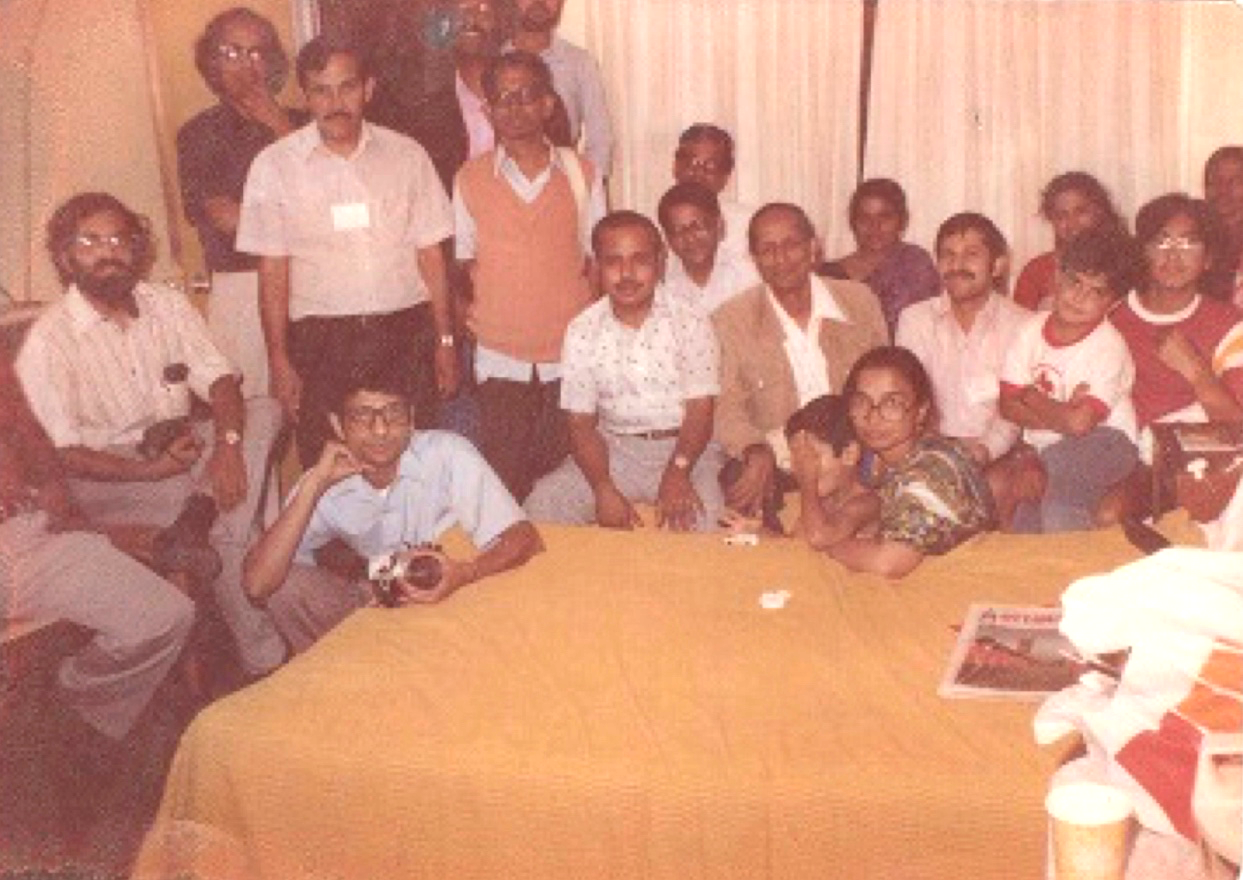
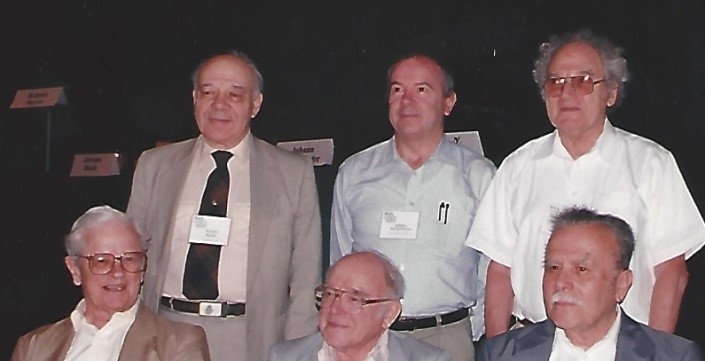
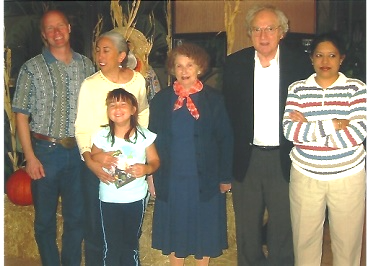
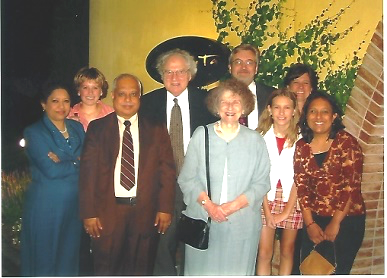
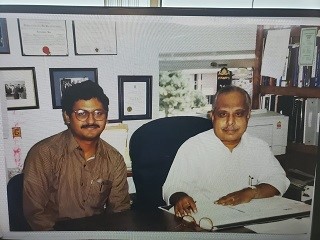
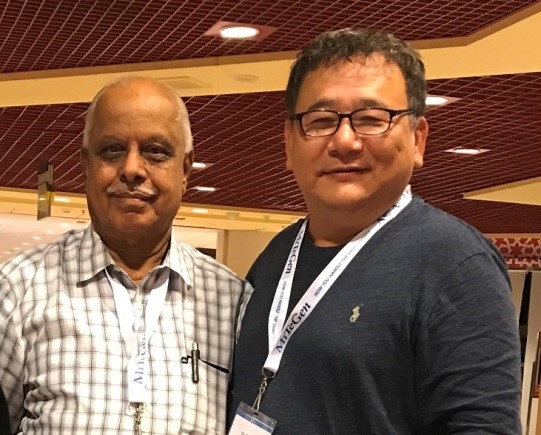
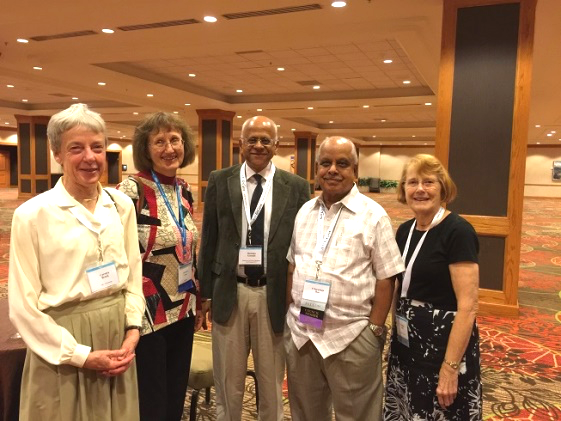
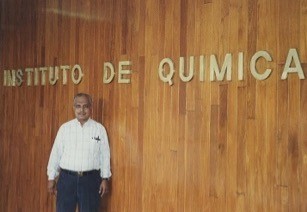
 Ana Ferreras of The National Academies of Sciences, Engineering, and Medicine, modeling in India.
Ana Ferreras of The National Academies of Sciences, Engineering, and Medicine, modeling in India.
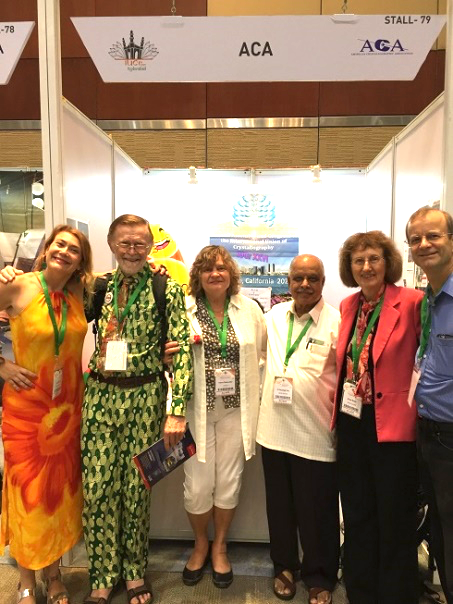
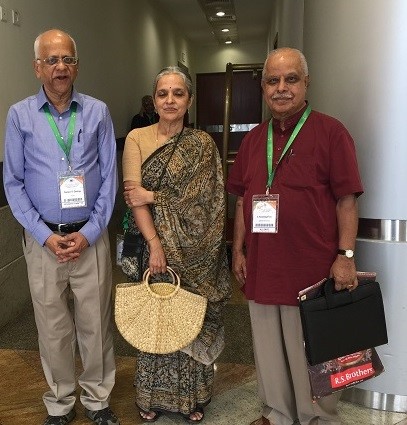
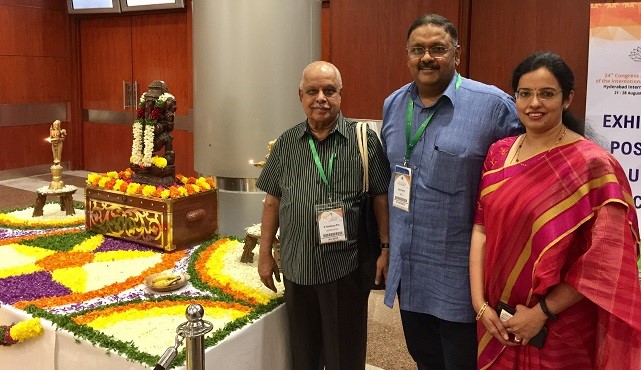

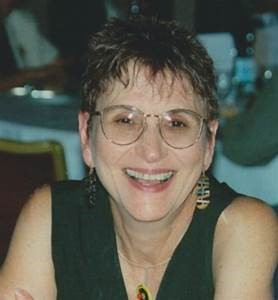 Judy Flippen-Anderson.
Judy Flippen-Anderson.